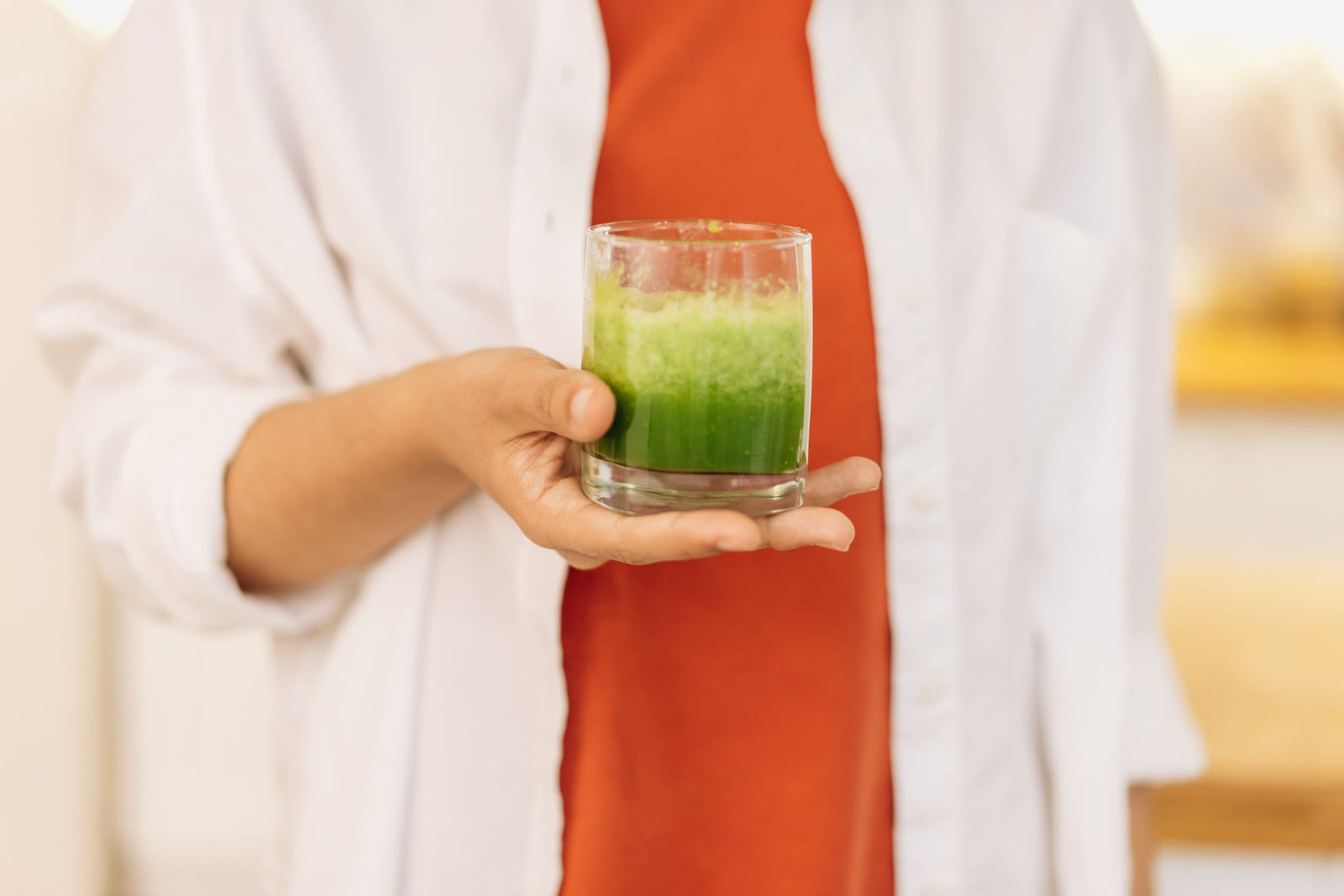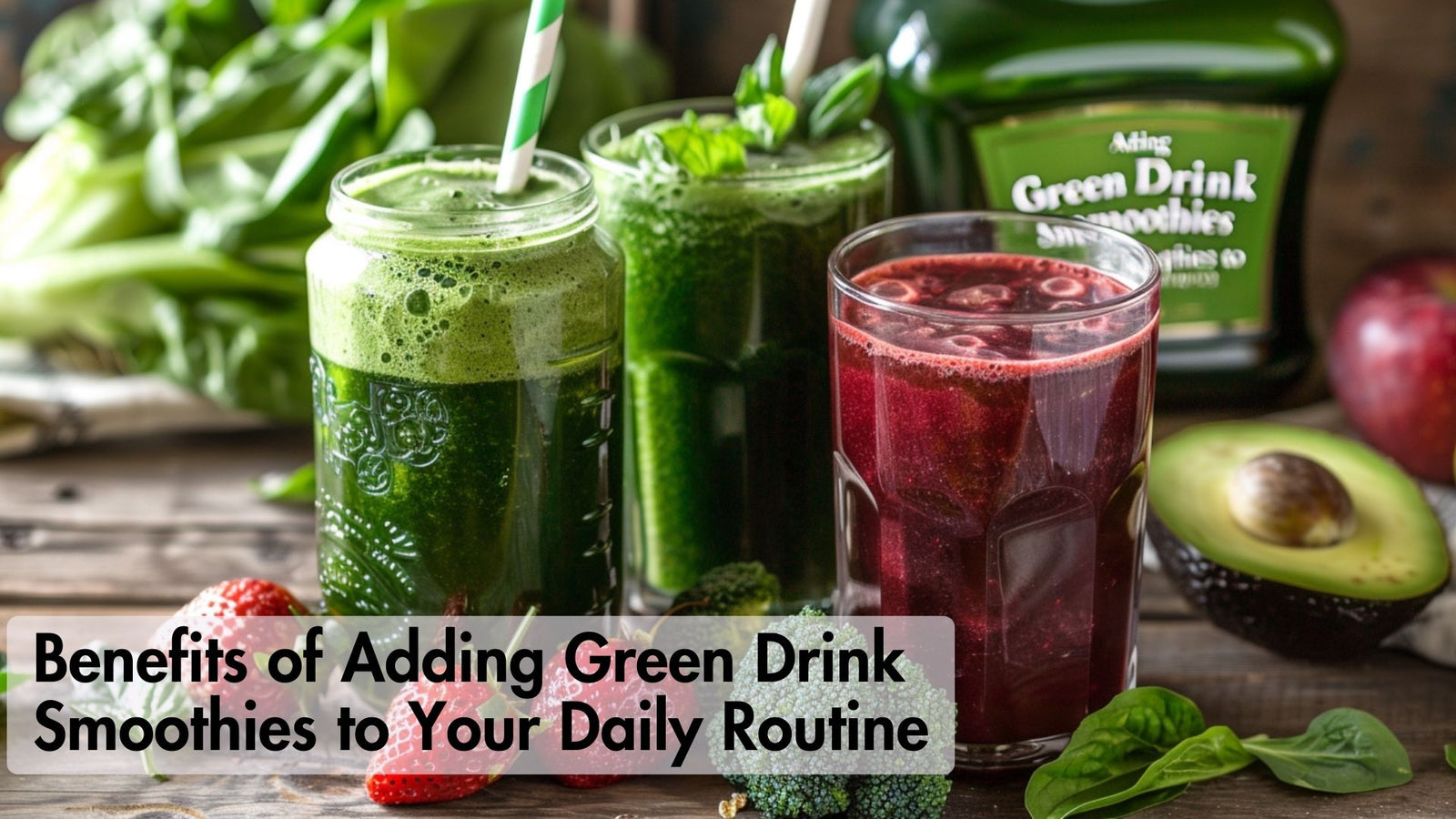Accessories
Check out our full lineup of yoga accessories to help you with your daily meditation practice and fitness goals...
Try our new Cork Yoga Brick for soft but solid support
Check out our full lineup of yoga accessories to help you with your daily meditation practice and fitness goals...
From Powders to Liquids: The Best Ways to Incorporate Hydrolysed Collagen into Your Diet
October 08, 2025 10 min read


Feeling stiff joints or tired skin? Collagen makes up much of our bodies, but we make less as we age. This post shares easy ways to add hydrolysed collagen into your diet using powders, liquids, pills, and even gummies. Stay with me if you want a simple guide for better health!
Key Takeaways
- Hydrolysed collagen can be added to your diet in many ways, like powders, liquids, capsules, and gummies. Each has benefits for joints and skin.
- You can mix collagen into drinks or foods without changing flavour. It works with hot coffee, smoothies, water, oatmeal and soups.
- Most people find hydrolysed collagen easy to digest. It helps with joint health and makes skin look better.
- Drinking enough water and reducing sugar are important when taking collagen. These habits help the body use it better.
- Always check how much you should take each day. Talk to a doctor if you're not sure about starting supplements.
Benefits of Hydrolysed Collagen

Moving from what collagen is, it helps to see why hydrolysed forms matter. Hydrolysed collagen breaks down the protein into small pieces for quicker absorption. This easy-to-digest form lets the body use it without fuss or muss.
Scientific studies have shown real gains for joint health, especially with knee osteoarthritis. Adults given collagen supplements in trials reported less pain and could move more freely.
“My knees don't grumble as much during a morning walk,” one customer shared last year on Lean Greens' Facebook page.
Collagen peptides can reach your bloodstream, boosting skin elasticity and moisture while fighting signs of ageing like wrinkles or dry patches. Think of them as tiny helpers patching up thinning spots under your skin's surface.
Type I collagen makes up 90% of human skin—no wonder so many look to it for firmer-looking faces! Muscle strength also gets a lift because low levels can lead to weakness.
Gut health may receive a helping hand too; studies found an increase in Lactobacillus after eating peptide-rich diets. These peptides act like little sparks that tweak our digestive bacteria for the better, making our tummies happier each day.
Antioxidant effects have popped up in research as well, catching free radicals before they cause trouble inside cells. Best part? Most people do not feel unwanted side effects from these supplements; scientists are still studying long-term impact but so far, things look promising for those hoping to keep moving smoothly and age gracefully.
Best Ways to Incorporate Hydrolysed Collagen
Finding easy ways to add hydrolysed collagen into your day can feel like solving a puzzle with many pieces—liquids, powders, even chewy sweets. You might be surprised how simple peptides and amino acids slip into drinks or meals without fuss—keep reading for some clever tricks.
Collagen Powders
Hydrolysed collagen powders, often called collagen peptides, mix well into drinks or food. A scoop of this powder holds about 5 to 10 grams of protein, which is the daily dose most brands suggest.
The unique thing about these powders is that they go through a special process called hydrolysis. This makes them easier for your body to digest and gives each molecule a light weight at around 36 kilodaltons.
Collagen powders dissolve best in warm or room temperature liquids like coffee, tea, or even soups. No need for fancy tools—just use a frother or a blender if you want to stop clumps from forming.
These powders do not lose their strength up to 300 degrees Celsius, so adding them to hot porridge will not harm the benefits. Using collagen powder helps boost hydration since higher protein can make you thirsty; keeping a glass of water nearby is wise advice! Some find it handy as you can carry small sachets in your bag while others find the texture changes when added to thicker foods like yogurt.
Additional Information: Most brands advise a daily intake of 5 to 10 grams of powdered collagen. Splitting the dosage into morning and afternoon servings can help avoid mild bloating. Studies suggest that adjusting the dose may improve absorption and benefit joint support and skin health.
Collagen Liquids
Moving from collagen powders to liquid options feels a bit like swapping a classic cuppa for a juice shot. Collagen liquids often come as concentrates you mix yourself or as handy ready-to-drink shots, perfect for busy lives on the go.
Unlike capsules or gummies, these drinks suit people who have trouble swallowing tablets. They travel well, fit into most bags or pockets, and let you get your collagen fix fast—sometimes before your morning toast pops up! Many of these supplements add vitamins or sweeteners; this works for some but can cause sensitivities in others.
Each serving usually gives less collagen than what you'd scoop from powder tubs and prices tend to be higher per dose. Still, many choose them because they are portable and support hydration easily through daily consumption with water or juices.
Additional Information: Check the label for the exact collagen dose. Compare the cost per serving between liquid and powdered collagen to align with your dietary sources and budget.
Collagen Capsules
Capsules offer a flavourless and portable way to boost your hydrolysed collagen intake. Many people on the go find them handy, especially if mixing powders sounds like too much faff before work or after the gym.
Each capsule usually contains powdered collagen; most big UK brands suggest taking three to six per day for the right dosage. Some capsules are chunky, which can be hard if you struggle with swallowing pills.
Capsule form suits busy lifestyles but may prove pricey over time since you need quite a few for each serving.
Expect each batch to vary in strength—always check the label, so you know what's going in. For those who prefer sweets to pills, many now swap out their capsules for gummies or chewables instead.
Additional Information: Remember to review the dosage instructions on the capsule packaging. Individual needs may vary, so consider pairing capsules with other dietary sources for optimal joint support and skin health.
Collagen Gummies
After talking about capsules, gummies step in as a sweet twist. UK brands like Myvitamins offer pomegranate collagen gummies that taste great and help you boost your dietary intake of hydrolysed protein without fuss.
Many choose these gelatin-based nutritional supplements because swallowing pills is no picnic. Popping a gummy feels more like a treat than taking medicine.
Gummies often have extra vitamins and flavourings to improve taste, though some carry added sugar or sweeteners which might not suit everyone's goals. Most contain less collagen per serving compared to powders or liquids, but their convenience is hard to beat if you are on-the-go.
Flavoured options appeal even more to people who struggle with plain options or want something quick on busy mornings. If you cannot stomach large tablets or dislike the texture of drinks, this easy bite can fit neatly into your routine without causing bother.
Additional Information: Gummies may have lower collagen content per serving. They serve as a convenient alternative, especially when a sweet option fits your daily routine. Ensure you check for added sugars if you monitor your intake.
Supplement Dosage and Comparison
| Form | Pros | Cons | Typical Dosage |
|---|---|---|---|
| Powdered Collagen | Versatile, cost-effective, sustainable | May clump if not mixed well | 5-10 g per day |
| Liquid Collagen | Portable, quick absorption | Typically lower collagen per serving, higher cost | Depends on brand |
| Collagen Capsules | Easy to take, no mixing required | Higher cost over time, variable absorption | 3-6 capsules per day |
| Collagen Gummies | Palatable, ideal for on-the-go | Lower collagen content, may include sugars | Depends on brand |
Adding Collagen to Drinks
Mixing hydrolysed protein into your favourite drinks feels easier than making a cup of tea on a rainy morning. Your smoothie, coffee, or simple juice can pack in more amino acids and peptides without changing the taste—just whisk it in, and you're set for better joint support and nutrition.
Coffee or Tea
Hydrolysed collagen powder slips right into your morning coffee or afternoon tea, blending with the taste. Skinful Marine Collagen Powder and Fundamental Bovine Collagen Powder both handle heat, staying stable up to 300°C.
Hot chocolate and chai lattes also work well for a bit of variety on chilly days. A quick whirl with a frother or blender keeps clumping away and leaves your drink smooth.
Splitting doses between coffee in the morning and tea later helps some people avoid bloating, especially older adults who want steady protein without stomach trouble. "A spoonful in my cuppa saves me faffing about with pills," said Ruth, 54, from Kent.
Higher protein may make you thirstier than usual; keeping hydrated supports joint movement as well as skin health while using these supplements regularly.
Smoothies
Drop a scoop of collagen powder in your blender with berries, spinach, or a splash of orange juice. The powder mixes well and you will not notice any taste. Vitamin C from fruits like strawberries or bell peppers boosts the work of collagen for your body.
Collagen blends without lumps if you use a good blender.
Mixing collagen into smoothies is easy, even if you are busy or want something quick after exercise. Try simple recipes: banana with blueberry and kale; mango with carrot and ginger; raspberry paired with red pepper halves in oat milk.
Each gulp helps protein sneak into your diet while giving skin, joints, and hair some support. Smoothies make hydration fun and nutrition effortless for daily health and wellness goals.
Water or Juices
Stir collagen powder into water or any juice for a quick supplement boost. Room temperature drinks work best, so your powder mixes smooth and easy. Adding a squeeze of citrus can help too; vitamin C from orange or lemon juice supports natural collagen synthesis in the body.
Try using a small whisk or milk frother if you want everything lump-free.
Many people choose flavoured powders to jazz up their plain water. For more variety, ready-to-drink liquid shots are available at most shops now—open and sip straight away, no faff needed.
Collagen with morning apple juice? Easy as pie. If hot cups aren't your thing, cold bottles are perfect for on-the-go hydration and nutrients after exercise or while running errands.
Fancy something thicker? Mixing collagen into smoothies offers even more ways to drink it down without fuss.
Adding Collagen to Foods
Stirring hydrolysed collagen peptides into your breakfast can boost protein intake, without changing taste or texture. You might find it slips right into soups and sauces too—almost like a secret helper for bone and joint support.
Oatmeal or Yogurt
Mixing hydrolysed collagen powder into your morning oatmeal or yoghurt adds a quick protein kick. Unflavoured options keep the natural taste you love, so breakfast stays tasty and easy.
Both warm oats and cold yoghurt work well with collagen; it keeps its effect in both cases. You get more out of every spoonful by blending vitamin C-rich berries like strawberries or blueberries into your bowl to help skin care and joint support.
Collagen powder blends smoothly, not changing texture if you stir it well. Oatmeal and yoghurt serve as handy bases for regular supplement use without fuss—no need for hot drinks if you prefer a cooler start to the day or a mid-afternoon snack at your desk.
Soups or Sauces
Moving from oatmeal or yogurt, soups and sauces welcome hydrolysed collagen too. Toss a scoop of collagen powder into a bubbling stew or homemade gravy. It melts right in, leaving no trace behind.
Your family slurps up the extra protein without even noticing. Think beef broth simmered with carrots and peas; each spoonful packs more than flavour—it's loaded with amino acids for joint support.
You make hearty chicken bone broths every autumn? Stir in hydrolysed collagen to bulk up nutrients like B vitamins and calcium. Use it as a stealthy boost for warm dishes on chilly UK evenings.
My mate Sam adds gelatin-rich stock cubes to her cottage pie sauce—her knees love it! “Hot soup is comfort food,” she says, “but add that sprinkle of collagen, and you've got dietary supplements hiding in plain sight.”.
Ultimate Guide to Collagen Supplementation with Hydrolysed Options for Optimal Health
Hydrolysed collagen works best with small, steady steps. Healthy habits play a big part in keeping skin, joints, and bones strong. Drinking plenty of water makes a real difference, helping the body use protein for repair.
Reducing sugar helps protect natural collagen stores too—high sugar breaks down these fibres over time. Getting enough sleep supports tissue healing; long nights out or staring at screens into the early hours can speed up ageing.
Smoking steals oxygen from the skin and blocks vitamin C absorption—a vital nutrient for making new collagen.
Strong evidence shows both food and powder forms help your body's needs if used daily. Think slow-cooked brisket or bone broth in stews, salmon with fish scales left on, or chicken drumsticks with their savoury skins still crisp.
Add vitamins like copper from beans and zinc from nuts to stir up natural synthesis alongside supplements each day for better health results than going it alone with pills. Experts have yet to agree on whether morning or evening is best—consistency beats timing every time according to current research as of 2024.
Those unsure should speak to their GP before starting any new regime since these products are not checked by UK authorities for safety just yet.
Next comes adding more flavour and nutrition through clever ways in meals like oatmeal bowls or tasty yoghurts.
Conclusion
So, from powders in your morning brew to liquids mixed with juice, getting more hydrolysed collagen is easier than ever. Your joints and skin will thank you for the extra help. Pick a form that fits into your daily routine without fuss. Think of it as giving your body an extra layer of support, like tucking in before bed—simple but so helpful at any age.
FAQs
1. What's this fuss about hydrolysed collagen, then?
Hydrolysed collagen is the talk of the town because it's a protein that our bodies need but can't produce enough of on their own. It helps keep our skin glowing and joints strong.
2. How do I add hydrolysed collagen to my diet?
Well, there are many ways to sneak in some more hydrolysed collagen into your meals! You could stir some into your morning coffee or tea, blend it into smoothies, or even mix it with yoghurt for a protein-packed snack.
3. Are all forms of hydrolysed collagen created equal?
Not quite! Hydrolysed Collagen comes in various forms like powders and liquids, each having its pros and cons. While powder form may be versatile for cooking up a storm in the kitchen; liquid form is ready-to-drink making it an easy addition to your busy lifestyle.
4. Does consuming more hydrolysed collagen guarantee better health?
While incorporating hydrolysed collagen into your diet can help boost skin health and joint function, remember - everything should be taken in moderation! It's not a magic potion after all but rather one piece of the puzzle towards achieving overall good health.
About Lean Greens
Lean Greens was founded in 2012 by Tim and Sam Goodwin. They started with a simple mission: help busy people eat more vegetables easily. The company has grown to be a trusted nutrition brand across the UK. Lean Greens creates supplements that support healthy habits. Their first product was Super Greens powder, which set the standard for an easy, tasty greens drink. Since its launch, Lean Greens has introduced other products like Drift Off, Amber Boost, and Collagen Greens. Every product meets real-life needs. Lean Greens formulates every item with straightforward nutrition in mind. The brand has gained thousands of satisfied customers and continues to serve the community with reliable nutrition without gimmicks.
Disclaimer
This content is for informational purposes only and is not a substitute for professional medical advice. Please consult your GP before starting any new supplementation or diet regime. There are no affiliate or sponsorship relationships affecting this content.

Reduce Bloating: How Superfoods Can Aid Digestive Comfort
February 28, 2024 9 min read
Bloating, a common digestive issue, affects many individuals worldwide. Characterised by a feeling of fullness, tightness, or swelling in the abdomen, bloating can be both uncomfortable and distressing. While it's often a result of overeating or consuming certain foods that the body finds hard to digest, bloating can also be a symptom of various underlying health conditions. It's a physical discomfort that can also impact one's self-esteem and quality of life.
Read More

Green Smoothie Recipes: Incorporating Superfoods for a Health Boost
February 21, 2024 10 min read
Green smoothies are more than just a health trend; they are a powerful way to enhance your daily nutrition and overall well-being. At the heart of these vibrant drinks are leafy greens – packed with essential vitamins, minerals, and fibre – blended into a convenient and delicious form. But what elevates a green smoothie from merely nutritious to a powerhouse of health? The answer lies in the incorporation of superfoods.
Read More

Discover the Benefits of Adding Green Drink Smoothies to Your Daily Routine
February 17, 2024 7 min read
Discover the benefits of adding green drink smoothies to your daily routine. Enhance your health and well-being with nutrient-rich beverages that improve digestion, boost energy levels, and support weight management. Start your journey to better health with Lean Greens today.
Read More
